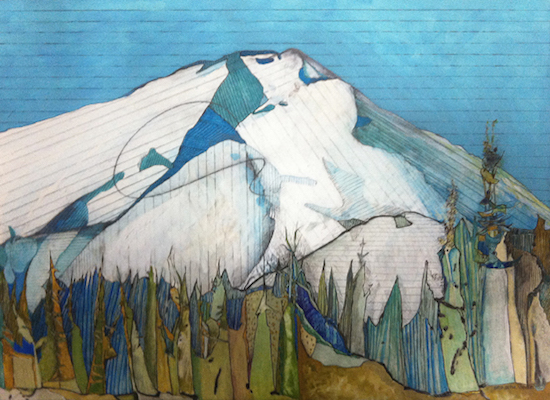written by Sophia McDonald | photos by Terry Manier
The position of manager at Umpqua Aquaculture doesn’t entitle Brandy Sullivan to special treatment. During harvest, she spends much of her time in front of a cold, wet stainless steel table shucking oysters.
“Your hands are really sore for the first couple weeks, but your muscles get used to it,” said Sullivan. Still, accidentally stabbing yourself with the shucking knife is a constant occupational hazard.

Two years into her tenure with the company, Sullivan leads a team of four people at Umpqua Aquaculture, which produces oysters using modern aquaculture practices. Growing oysters is a bit like cultivating hops underwater. Like hops, they grow on long lines that allow them maximum exposure to the nutrients they need.
Similarities to land-based farming don’t stop there. “We have to be aware of the weather all the time,” said Umpqua Agriculture owner Cindy Simmons. “There’s always seasonality. You have to learn to be flexible. We’re dealing with equipment and trying to make processes that are easy on people’s bodies so we don’t injure ourselves or others.”
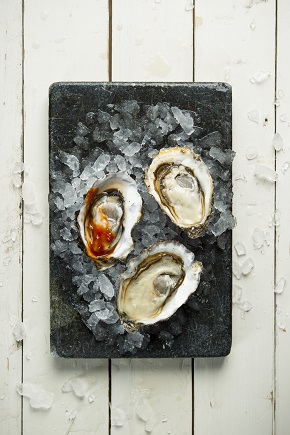 |
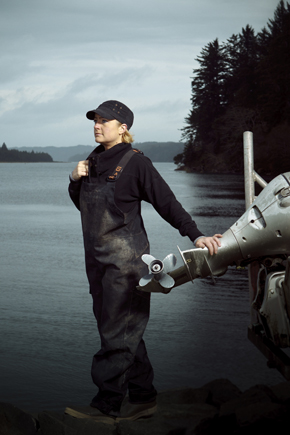 |
Sullivan supervises the farming process, called “seeding,” when she isn’t wielding a knife or working in the company’s retail store. It begins with a golf ball-sized package of larvae sent express from a hatchery. A typical batch has three million “seeds” balled up into a dark grey lump. The baby oysters are submerged in a tank of warm seawater along with hundreds of empty oyster shells, which are kept in giant bags made from old trawl nets. A filtration system agitates the water. As the larvae swirl around, they begin to attach to the shells.
The water is gradually cooled until it reaches the temperature in the Umpqua Triangle, the junction of the Umpqua River and the Pacific Ocean, where the oysters are transplanted. The cool, clean water provides a perfect environment for growing oysters.
Umpqua Aquaculture leases sixty acres of surface water from the State of Oregon for its operations. To use it all effectively, the oyster farmers need to seed oysters all year long. The company tracks the maturity of the different lines of oysters on a huge map of the Triangle that hangs on the office wall.
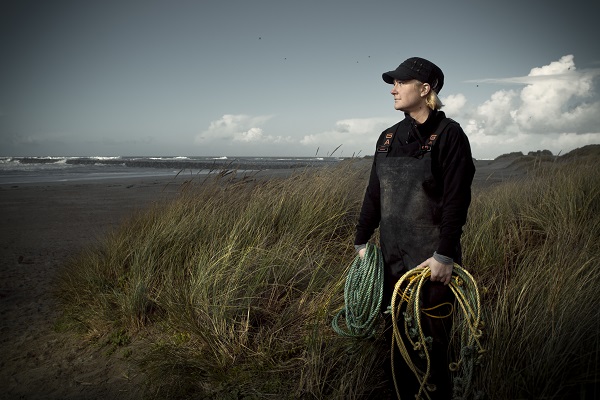
After three or four years, the oysters show their maturity with dotted areas. It is then that Simmons’ crew will boat out and harvest them by pulling in the long ropes that are attached to the buoys to which the oysters cling.
Once back at Umpqua Aquaculture’s processing facility, the oysters are washed and sorted to determine which will be sold live and which will be removed from their shells and sold in containers at the company’s retail store. The live oysters are weighed, sorted, washed a second time and put in bags.
Check out oyster recipes from our Home Grown Chef here
The best shells are saved for the seeding process; the rest are tossed into a massive pile outside. Local residents are encouraged to come by and help themselves to the shells–a great source of calcium for chickens, or for garden and home decorations. The shelled oysters go into a bubbler to remove sand or grit, then are sorted by size and put into containers.
Sullivan’s goal is to fill a four-gallon bucket every day she’s shucking. “At times, it’s really labor intensive, but it’s rewarding,” she said. “You see something start so small and, in a few years, you’ve seen it grow. It’s a cycle.”
Oysters once grew abundantly in Oregon’s bays and rivers, but overharvesting decimated the population in the early 1900s, said John Byers, program manager for the Shellfish Plat Leasing Program at the Oregon Department of Agriculture.
In those days, Oregon was known for Olympia oysters, the native species. Most of the bivalves grown for commercial purposes today are a larger, faster growing variety called the Pacific oyster. “It’s becoming native because we’ve been farming it so long,” said Byers.
While Oregon’s oyster industry is a fraction of the size of that in Louisiana and Washington—two of the country’s biggest producers—Oregon is making its mark. Production from state-leased water has grown to 100,000 bushels and $10 million in recent years, according to the Oregon Department of Agriculture.
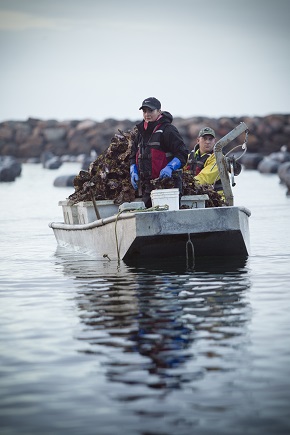 |
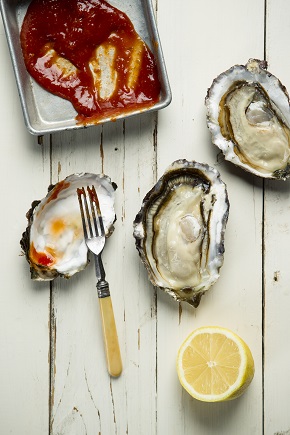 |
Oysters are high in omega-3 fatty acids, iron, zinc and many other minerals. This shellfish is also an aphrodisiac and perfect for a seductive Valentine’s Day menu. Alder-smoked Pacific oysters—served with a sweet garlic-chili sauce on top of homemade crackers—are a great preparation, said Jon Hamlin at Tidal Raves in Depoe Bay. For a simpler method, Hamlin recommends giving oysters a light coating of corn or rice flour, pan frying them in oil, and sprinkling them with sea salt before serving.
Chris Whaley with The American Local, a Japanese-style gastropub in Portland, likes to fire up the grill with oysters.
Geoff Gunn, the chef at Bridgewater Bay in Astoria, shares another celebration-worthy recipe: Northwest Rockefeller oysters topped with bacon, breadcrumbs and wild watercress béarnaise sauce.
His tip for preparing oysters is hot and fast. “Don’t overcook them,” he cautioned. “They tend to get bitter and chewy. Keep them undercooked for the tenderness and sweetness that is inherent in the beautiful oysters we have here on the Coast.”

